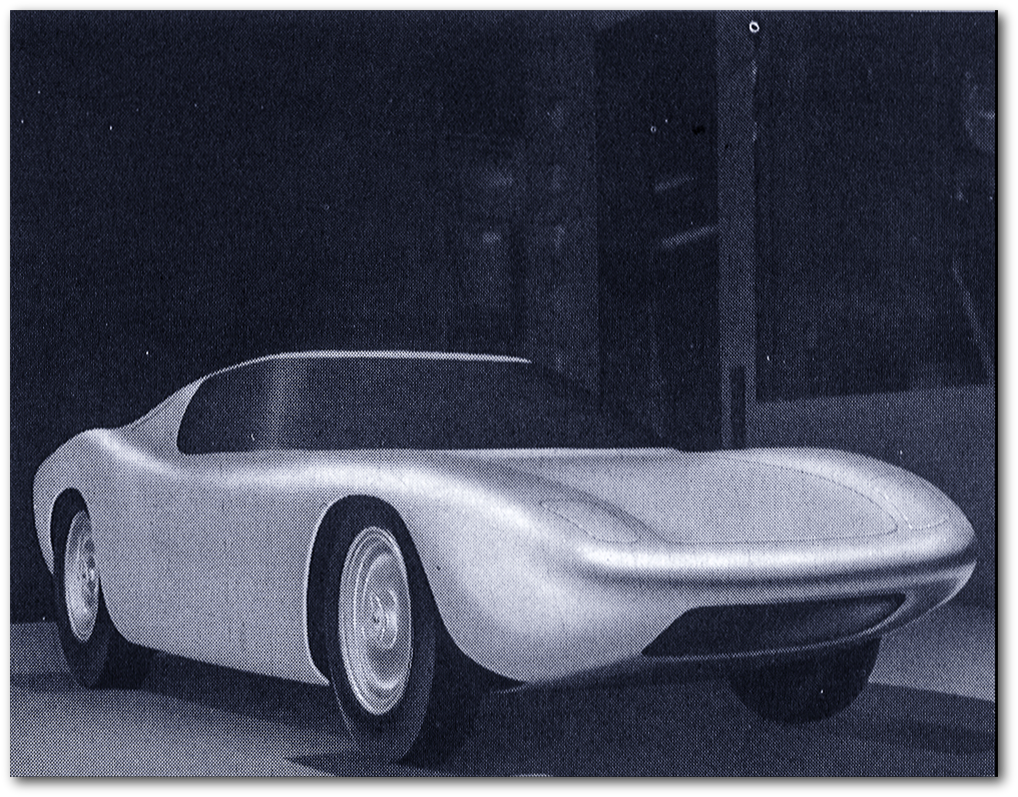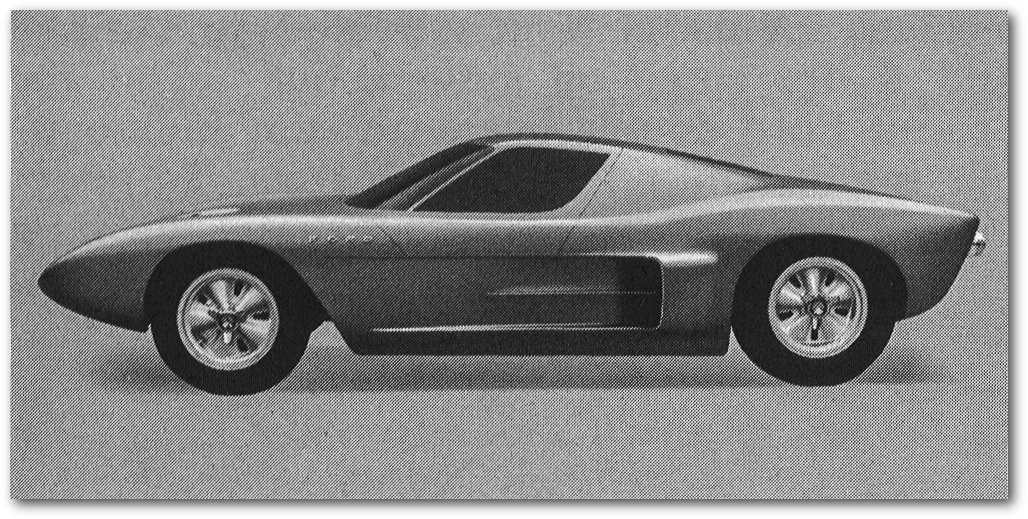



The delegation then moved on to England. The only builders capable, and available, to do the job were Chapman, Cooper and Eric Broadley. Chapman was already involved with Ford on the Indy project, but hadn’t really built a car or platform that appropriately reflected Lotus’s manufacturing capability for the project. Cooper, though the post-war pioneer of mid-engine design, had produced no relevant sports racer. Broadley was a new member of this fraternity; having built his first competition car in 1958. His name had been moved to the front of this list as a result of his Mark4. Better known as the Lola GT, it had debuted in early spring at the London Race car show. Here was a car that was a revolution of FIA rules interpretation and contemporary competition engineering. By simple definition it was an endurance competition coupe. Upon closer inspection it revealed itself to be an aerodynamic GT class prototype, with Formula One suspension tied to a semi monocoque chassis. Its exterior dimensions were diminutive, but it could accommodate a 6’5” driver, and was powered by a 260ci Ford engine. Its ingenious door design allowed for rapid driver change, without time wasting contortions. For the exploration crew from Dearborn it was made to order; being the first sports racer built to accommodate an American power plant. For racing in general it was an entirely new direction and would set the standard for competition coupes over the next decade. For Ford, the Lola GT would provide a perfect test bed for development of all the elements that needed shaking down.
After visiting Broadley’s Bromley facility, a one-year personal services contract was drawn up to begin the development the Ford GT. It was a contract that would dramatically transform Eric Broadley’s young operation, as well as Ford’s international image.
We'll let Roy pick it up from here.
“After we had contracted with Eric, we said we would put him in a new facility. And we hired John Wyer to do a number of things.
“He brought some good experience to the equation. First of all he was the race manager for Aston Martin when they had won Lemans. So he knew about Lemans. He, was also English, he knew where we were wasn’t a good location at Bromley, where Eric was. It’s the wrong side of London for contacting the motor industry, and all the suppliers. It’s east of London rather than west of London.
“So his first job was to go out and get factory space. That would provide us forthwith with what we wanted. And, um, find something for Eric where he could continue on after a year of working with us. Go back to what he was doing. Only in a nice facility rather than a dumpy one.
“John went out and quickly found, funnily enough, two little factories. Next door to one another. They were actually a duplex kind of factory complex. And that was in Slough.
“So we actually never really worked out of Bromley. We went straight to Slough. And that became our center of operation. Eric doing his thing in one half. And us doing our thing in the other. With Eric working full time for us that first year.
“And that little factory, at the end of sixty-four, became the production plant for Ford GTs.
“John Wyer went on running that, into the future.
“That is where we produced thirty or forty of them, for the public, to homologate them. For the second class in LeMans GT. That is the production GT. And the top class is the prototype class. And, um…we wanted to cover both bases, so, that all worked out fine. “
“So basically what you’re saying is that John Wyer came in and was instrumental as director of logistics on the ground in England for you?” I asked.
“Yeah.” Roy responded, “He came in as the general operator to consolidate the whole thing in Europe in that year.
“I wanted a place over there. And Eric, Broadley, wanted a place he could continue working over there. So John found the right premises and became the business manager for that facility."






Clay Model
Wind Tunnel Model






